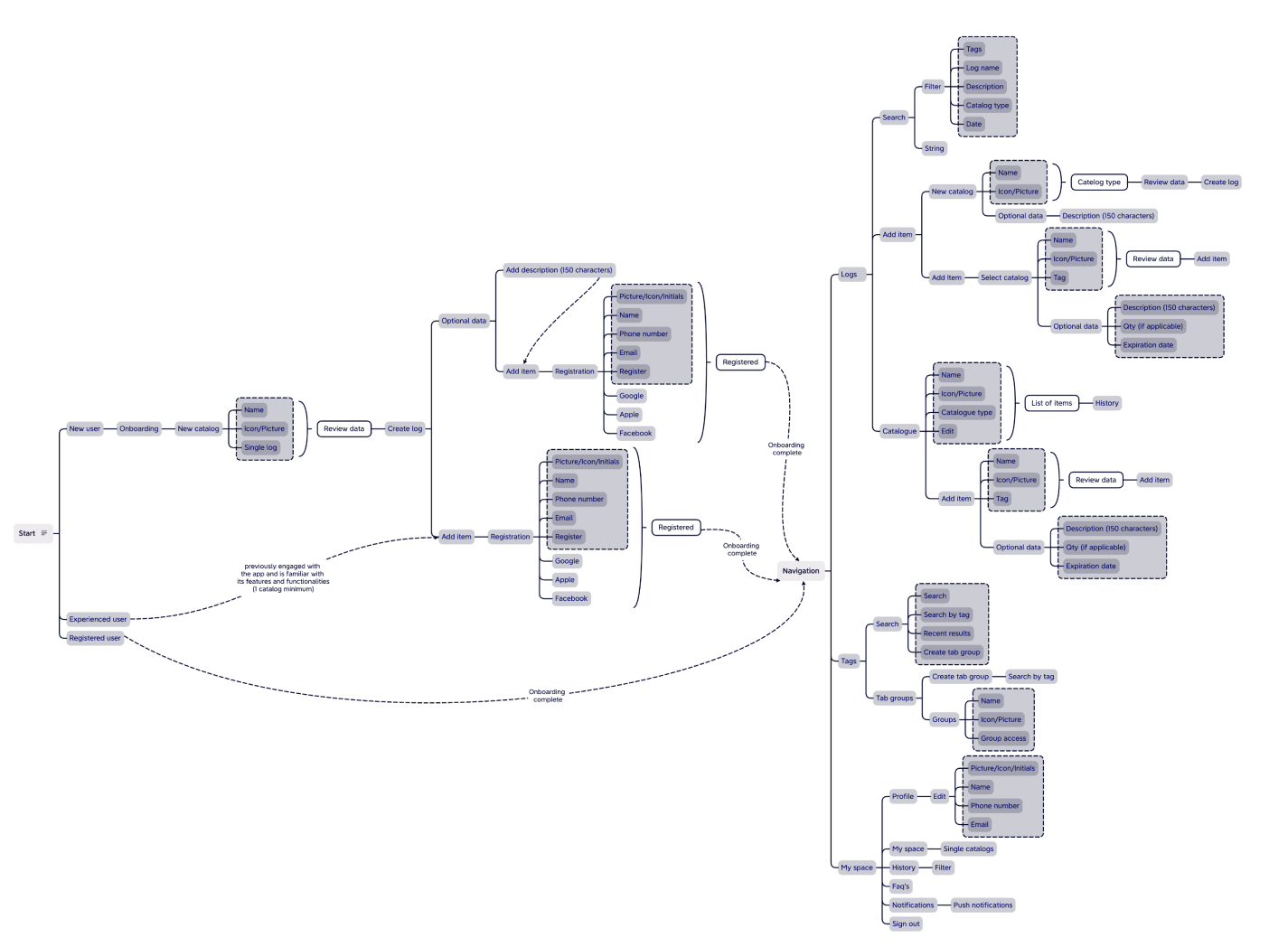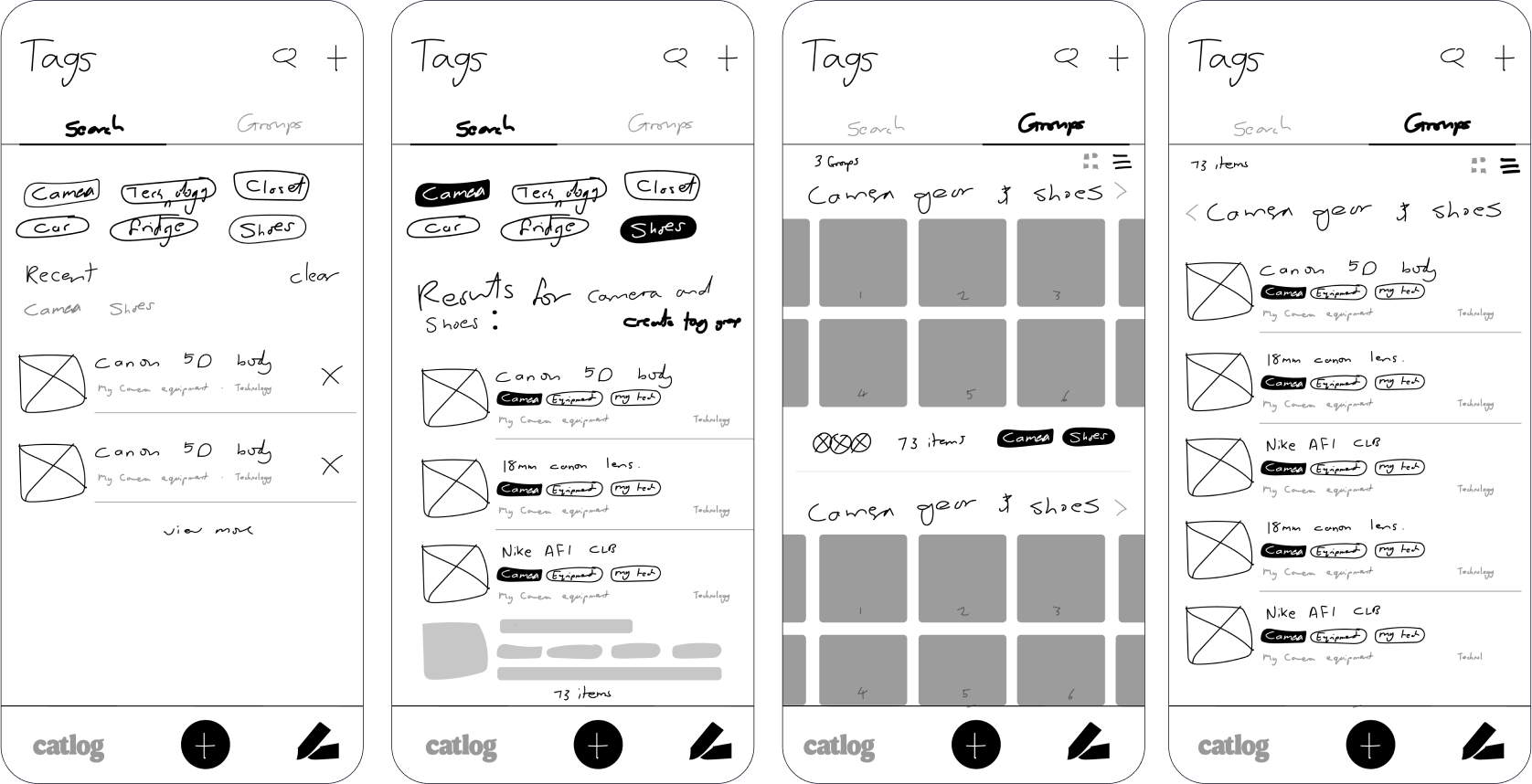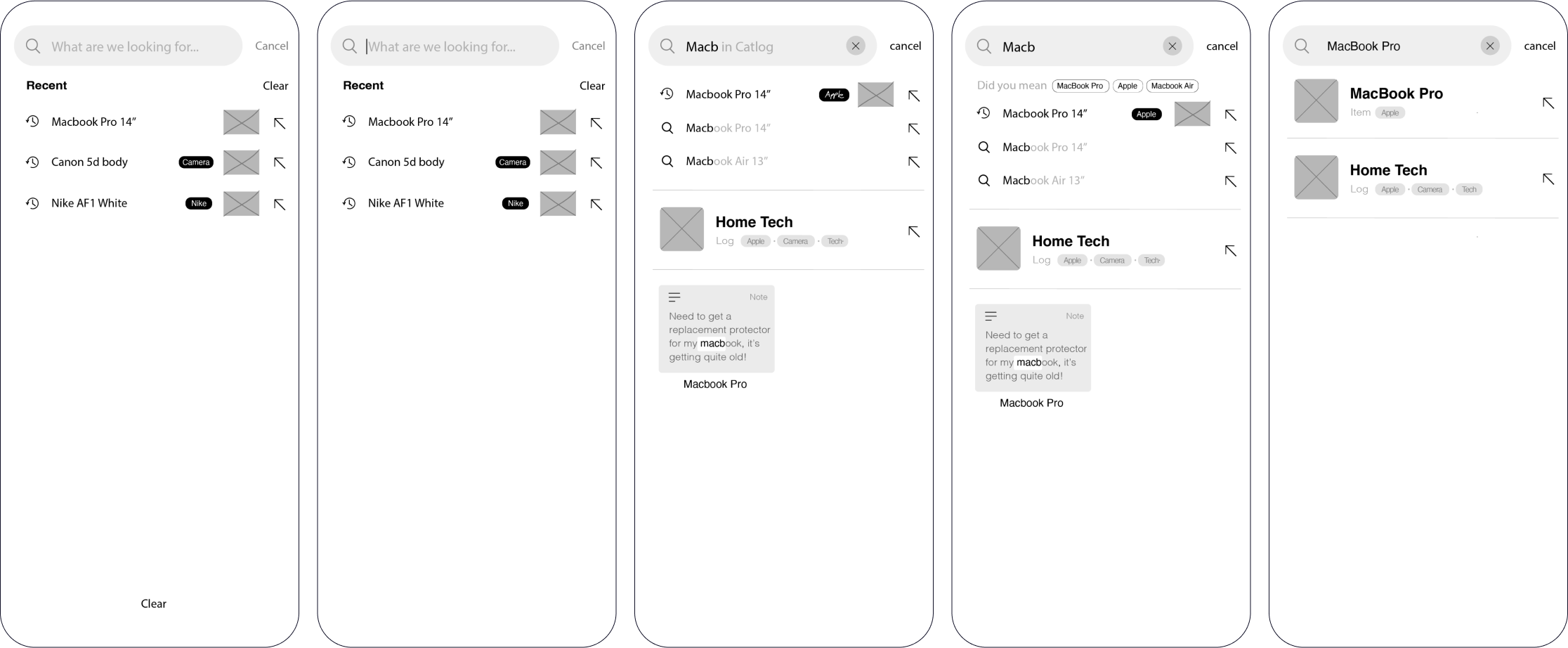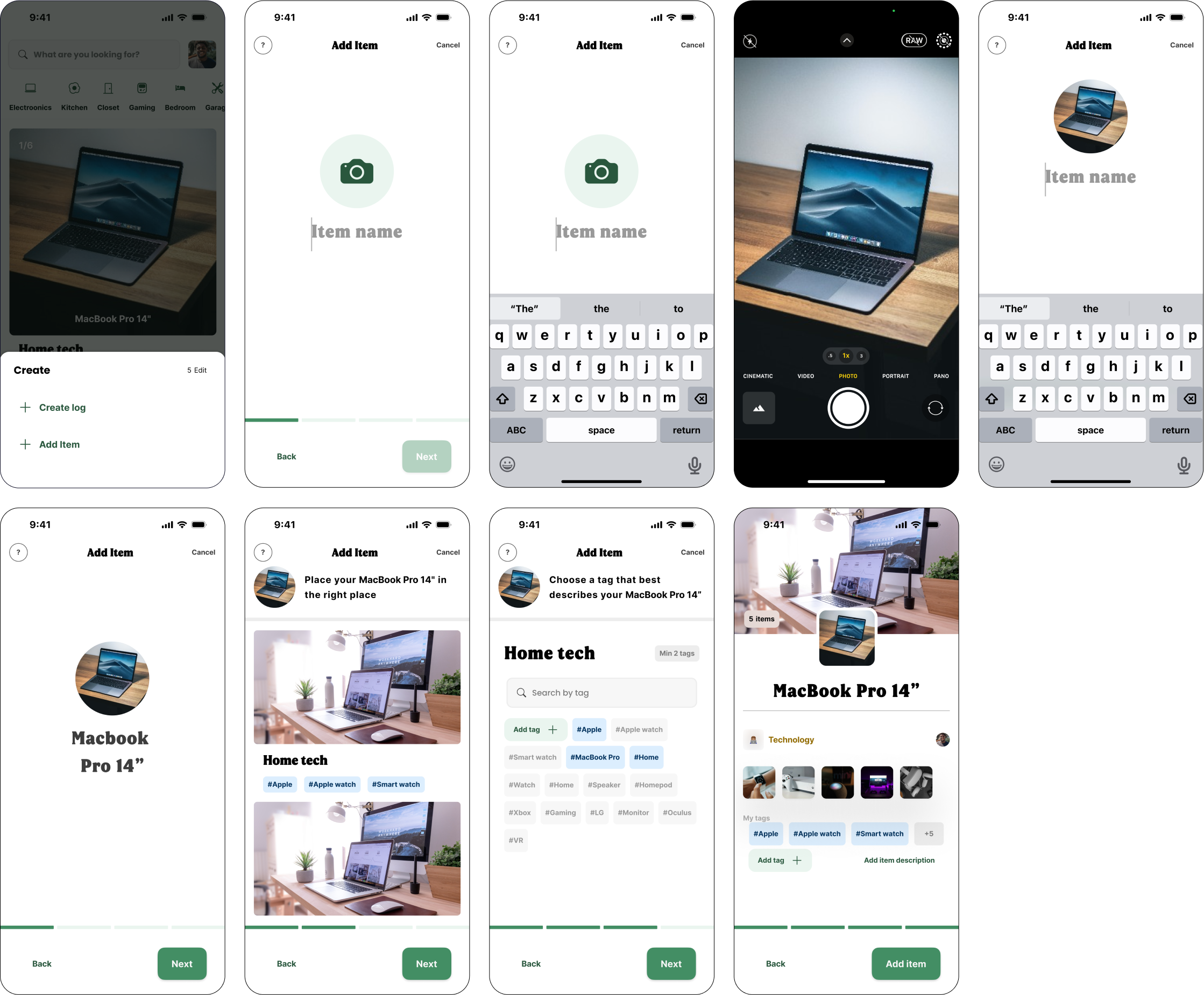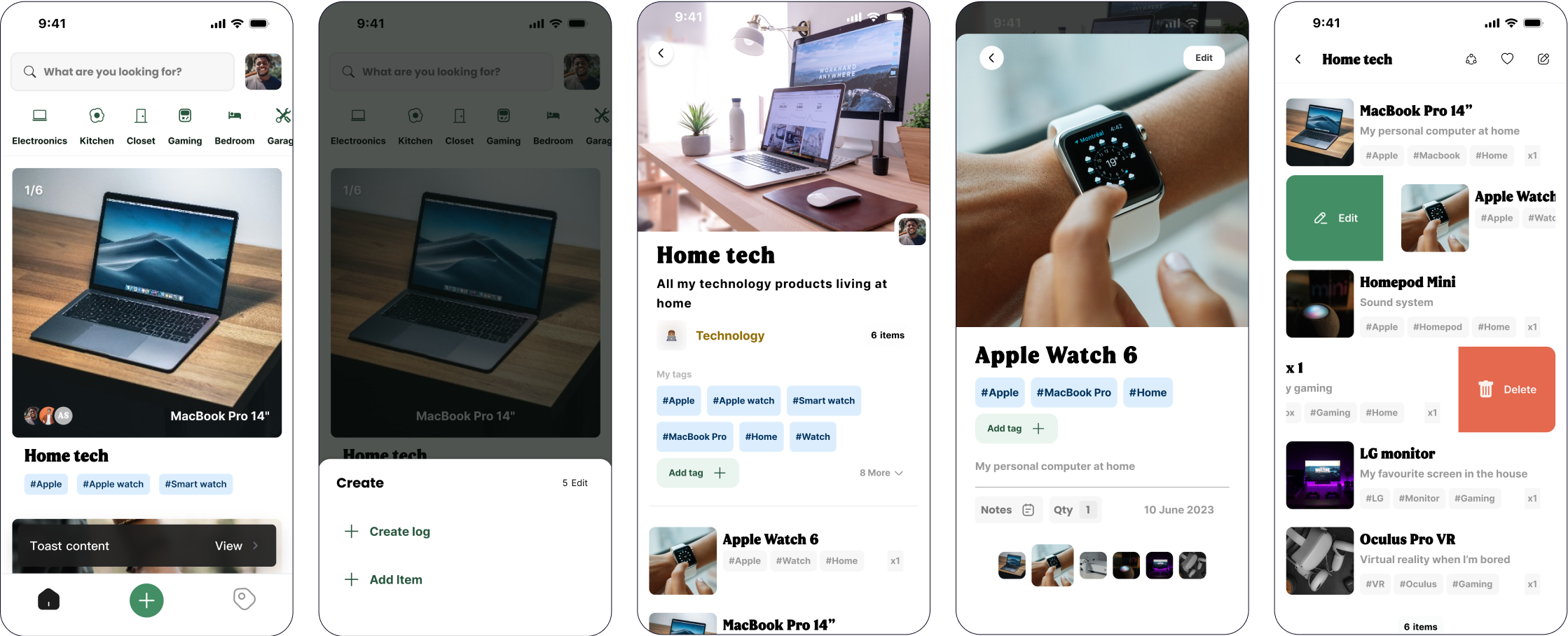Catlog

Deliverables
Interaction Design: High-fidelity interactive prototype for key tasks on iOS






Project Specifications
Duration: 4 weeksUX/UI Design:



Roles
Project where I assumed the following roles:



Women
Living in
Whose
Ranking
18-35
Metro City
Tech-savvy
LSM 5.5
I learned Design Systems

Create a user-friendly solution to tackle household misplacement and forgetfulness, streamlining storage organisation for easy retrieval, management, and tracking of belongings.
1 / 5 Empathise
Defining the Target Audience for the Project
The empathy phase in design thinking played a pivotal role during the creation of our organisational application. Understanding the needs, challenges, and aspirations of our users was foundational to crafting a solution that truly resonated with them.
The empathy phase in design thinking played a pivotal role during the creation of our organisational application. Understanding the needs, challenges, and aspirations of our users was foundational to crafting a solution that truly resonated with them.
CORE
You
Roommate
Direct Family
Flatmate
Children
Helper
In-direct
Delivery man
Friends & Family
In-direct
Human Memory
Frequent shopping
Time of organisation
Physical Space
Emotional Attachment
Maintenance
Lifestyle habits
Financial Constraints
Labelling Tools and Resources
You -> Frequent shopping -> Human memory (situational)
You -> Friends & Family -> Tools and Resources
You -> Lifestyle habits -> Time of Organisation
You -> Physical space -> Maintenance
Tools & Frameworks I Used
What I used
Ecosystem Mapping
Value Exchanges
2 / 5 Define
Defining the Target Audience for the Project
The empathy phase in design thinking played a pivotal role during the creation of our organisational application. Understanding the needs, challenges, and aspirations of our users was foundational to crafting a solution that truly resonated with them.
The empathy phase in design thinking played a pivotal role during the creation of our organisational application. Understanding the needs, challenges, and aspirations of our users was foundational to crafting a solution that truly resonated with them.
Create a user-friendly solution to tackle household misplacement and forgetfulness, streamlining storage organisation for easy retrieval, management, and tracking of belongings.
Key Features
Image and Tag Association
Users have the ability to associate images with each item, providing visual references for easy identification. Additionally, custom tags can be assigned to items to enhance organization and search capabilities.
Search and Filtering
Within each catalogue, users can add individual items, assigning titles, images, descriptions, quantities, and custom tags. This functionality allows users to keep track of their belongings and easily locate specific items within a storage area.
Item Management
Within each catalogue, users can add individual items, assigning titles, images, descriptions, quantities, and custom tags. This functionality allows users to keep track of their belongings and easily locate specific items within a storage area.
Catalogue Creation
Users can easily create catalogues for different storage areas, providing titles, descriptions, and cover images to categorize and identify each catalogue.
Heading
What I used
Ecosystem Mapping
Ecosystem Mapping
3 / 5 Ideate
Iteration was key during the low fidelity wireframes, especially in getting a clear understanding of what the core flows look like
The empathy phase in design thinking played a pivotal role during the creation of our organisational application. Understanding the needs, challenges, and aspirations of our users was foundational to crafting a solution that truly resonated with them.
The empathy phase in design thinking played a pivotal role during the creation of our organisational application. Understanding the needs, challenges, and aspirations of our users was foundational to crafting a solution that truly resonated with them.
Heading
What I used
Ecosystem Mapping
Ecosystem Mapping
4 / 5 Prototype
Getting a Grip on the Problem with the Info We've Collected
The empathy phase in design thinking played a pivotal role during the creation of our organisational application. Understanding the needs, challenges, and aspirations of our users was foundational to crafting a solution that truly resonated with them.
The empathy phase in design thinking played a pivotal role during the creation of our organisational application. Understanding the needs, challenges, and aspirations of our users was foundational to crafting a solution that truly resonated with them.
Heading
What I used
Ecosystem Mapping
Ecosystem Mapping
5 / 5 Test
Defining the Target Audience for the Project
The empathy phase in design thinking played a pivotal role during the creation of our organisational application. Understanding the needs, challenges, and aspirations of our users was foundational to crafting a solution that truly resonated with them.
The empathy phase in design thinking played a pivotal role during the creation of our organisational application. Understanding the needs, challenges, and aspirations of our users was foundational to crafting a solution that truly resonated with them.
Heading
What I used
Ecosystem Mapping
Ecosystem Mapping
What did I learn?
By making use of variable based design systems, it became dramatically more simple and easy to maintain design components and utilities without any double work.
